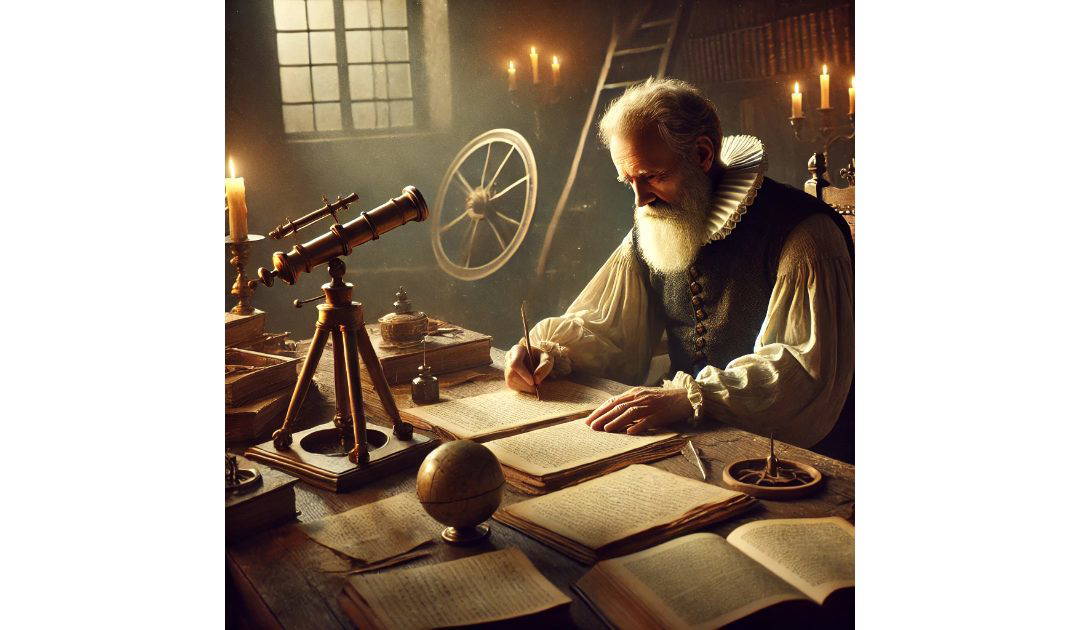On the 22nd of February, 1632, Galileo’s “Dialogue Concerning the Two Chief World Systems” was published. I have posted about Galileo before, because he is a character in Fire and Earth, the second book in the Sir Anthony Standen Adventures. Galileo dedicated his book to his patron, Ferdinando II, Grand Duke of Tuscany. Ferdinando I, Grand Duke of Tuscany, was a character in The Spy who Sank the Armada. Indeed Francis Walsingham did send Sir Anthony to Florence, to spy on Ferdinando, because he was believed to be in correspondence with Mary Queen of Scots. But back to Galileo’s book.
Dialogue Concerning the Two Chief World Systems (Dialogo sopra i due massimi sistemi del mondo) is one of the most influential works in the history of science. The book presents a discussion on the competing astronomical models of the universe: the Ptolemaic (geocentric) system, which held that the Earth was the center of the universe, and the Copernican (heliocentric) system, which proposed that the Earth and other planets orbit the Sun. Written in Italian rather than Latin, the book was intended to reach a broad audience and make complex astronomical ideas more accessible.
The Dialogue is structured as a conversation over four days between three fictional characters: Salviati, who represents Galileo’s views and supports the Copernican system; Simplicio, a defender of the Ptolemaic system and Aristotelian physics; and Sagredo, an intelligent but neutral observer who asks questions and weighs the arguments. Through their discussions, Galileo carefully lays out the evidence for heliocentrism while challenging long-standing Aristotelian ideas.
One of the book’s most important contributions is its argument against the idea that the Earth must be stationary because motion would produce observable effects. Galileo counters this by explaining the principle of relativity: from within a smoothly moving ship, for example, one cannot tell whether the ship is in motion or at rest. This insight laid the groundwork for later developments in physics, including Newton’s laws of motion.
The Dialogue also presents Galileo’s observations made with his telescope, including the phases of Venus, which provided strong evidence against geocentrism, and the moons of Jupiter, which demonstrated that celestial bodies could orbit something other than Earth. These findings directly contradicted the Aristotelian view that all heavenly bodies must revolve around the Earth.
A particularly controversial aspect of the book was the portrayal of Simplicio, whose name in Italian suggests “simple-minded.” Although Simplicio’s arguments were based on official Church doctrine and the teachings of Aristotle, he is often depicted as stubborn and less intellectually agile than the other characters. This portrayal led to suspicion that Galileo was mocking Pope Urban VIII, who had previously been his supporter. The Pope, feeling personally insulted, allowed the Roman Catholic Church to take action against Galileo.
Following the book’s publication, Galileo was summoned to Rome by the Inquisition in 1633. He was tried for heresy and forced to recant his support for heliocentrism. As punishment, he was placed under house arrest for the rest of his life, and the Dialogue was banned by the Church. The book remained on the Index of Forbidden Books until 1822.
Despite its suppression, the Dialogue played a crucial role in advancing scientific thought. It helped shift European intellectual culture away from Aristotelian physics and toward empirical observation and mathematical reasoning. Today, the book is recognized as a landmark in the history of science, marking a turning point in humanity’s understanding of the cosmos.

